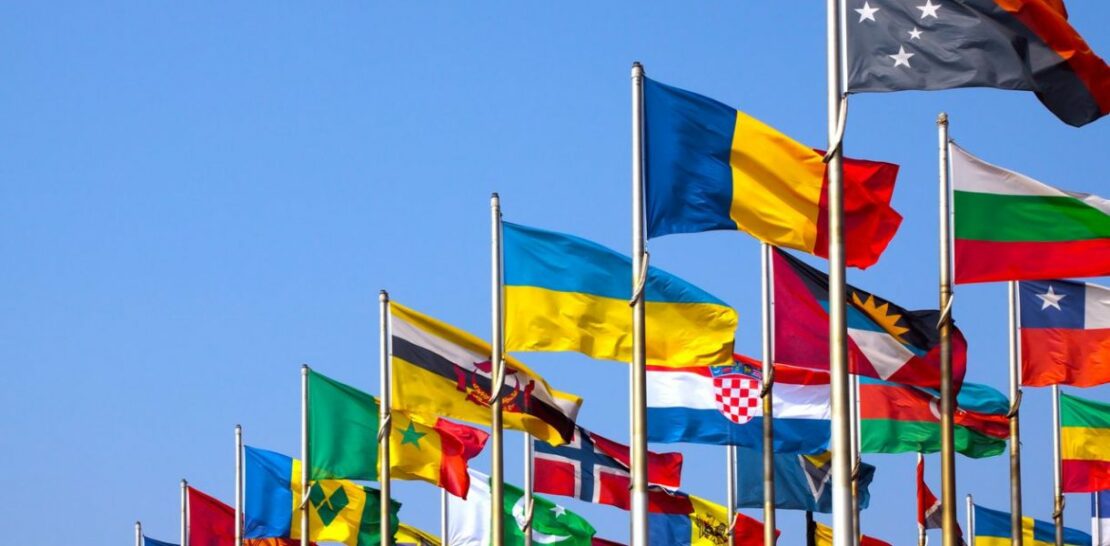In today’s globalized world, the importance of understanding and communicating in multiple languages has grown exponentially.
This comprehensive overview delves into the eight most widely spoken languages in 2024, providing insightful analysis into their historical roots, geographical distribution, and cultural impact.
By exploring the linguistic diversity of our planet, we can gain a deeper appreciation for the rich tapestry of human communication and foster greater cross-cultural understanding.
1. Mandarin Chinese: The Reigning Linguistic Giant
Mandarin Chinese has secured its position as the most widely spoken language in the world, boasting over one billion speakers.
Historical Roots: The Chinese language has a rich history dating back thousands of years. Classical Chinese, also known as Literary Chinese, was the written standard for much of East Asia from the 5th century BCE until the early 20th century CE. Mandarin, a dialect of the Chinese language, emerged during the Yuan Dynasty (1279–1368) and eventually became the official language of the Chinese empire during the Ming and Qing Dynasties.
Geographical Distribution: Mandarin Chinese is spoken predominantly in the People’s Republic of China, Taiwan, and Singapore. It is also widely spoken in diaspora communities across the globe, including in countries such as the United States, Canada, and Australia.
Cultural Impact: As China’s global influence continues to grow in the realms of politics, economics, and culture, the importance of the Mandarin language has become increasingly evident. The Chinese government has established Confucius Institutes worldwide to promote the teaching of Mandarin, and international interest in learning the language has surged. Knowledge of Mandarin has become a valuable asset in the global job market, and the language plays a crucial role in facilitating cross-cultural communication between East and West.
2. Spanish: The Language of Conquest and Unity
With an estimated 460 million speakers, Spanish occupies the second spot on the list of most widely-spoken languages in the world.
- Historical Beginnings: Spanish, a Romance language, evolved from several dialects of Vulgar Latin spoken by the Celtiberians in the Iberian Peninsula. The Glosas Emilianenses, a collection of Latin texts with Spanish glosses, are considered the first written records of the Spanish language, dating back to the 10th century.
- Conquest and Expansion: During the Age of Exploration, Spanish conquerors and colonizers spread their language across vast territories in the Americas, Africa, and Asia. Spanish became the lingua franca of the Spanish Empire and played a central role in the administration of its colonies.
- Geographical Distribution: Today, Spanish is the official language of 20 countries, primarily in Latin America and Europe. It is also widely spoken in the United States, where it is the second most common language after English.
- Unity in Diversity: Although there are numerous regional dialects of Spanish, a standardized version known as Standard Spanish has been adopted as the official language in most Spanish-speaking countries. This common language facilitates communication and fosters a sense of unity among diverse Spanish-speaking populations.
3. English: The Global Lingua Franca
As the third most widely spoken language in the world, English is undeniably a global powerhouse with approximately 379 million native speakers and over 753 million speakers in total.
- Origins: English is a Germanic language that originated in the Anglo-Saxon kingdoms of England in the 5th century. It has since undergone significant evolution, with Old English, Middle English, and Modern English representing distinct historical stages.
- Global Expansion: The expansion of the British Empire, which spanned every continent at its zenith, facilitated the spread of the English language across the globe. Today, English is an official language in 67 sovereign states and 27 non-sovereign entities.
- Language of Science, Business, and Diplomacy: English has become the dominant language in various fields, including science, business, technology, and diplomacy. Its status as a global lingua franca allows for widespread communication and collaboration among professionals from diverse linguistic backgrounds.
4. Hindi: The Language of India’s Heartland
Hindi, one of India’s 22 officially recognized languages, holds a prominent position as the fourth most widely spoken language in the world, with approximately 341 million native speakers.
Ancient Origins: The roots of Hindi can be traced back to the ancient Indian language of Sanskrit. Over time, the language evolved through various stages, including Prakrit, Apabhraṃśa, and finally, the Khari Boli dialect, which serves as the basis for modern Hindi.
Official Recognition: Hindi was granted official status in the Indian Constitution in 1950, alongside English, as the co-official language of the central government. However, each Indian state has the autonomy to choose its own official language, reflecting the linguistic diversity of the country.
Geographical Distribution: Hindi is predominantly spoken in the northern and central regions of India, as well as in neighboring countries such as Nepal, Pakistan, and Bangladesh. Additionally, there are significant Hindi-speaking diaspora communities in countries like the United States, the United Kingdom, and South Africa.
Bollywood’s Influence: Hindi cinema, popularly known as Bollywood, has played a significant role in promoting the Hindi language and Indian culture on a global scale. Bollywood films have captivated audiences worldwide, contributing to the increasing interest in learning Hindi.
5. Arabic: The Language of the Quran
Arabic, the fifth most widely spoken language in the world, boasts approximately 274 million speakers across the globe.
Historical Roots: Arabic, a Semitic language, is believed to have originated in the Arabian Peninsula around the 1st century CE. It later spread across the Middle East and North Africa through trade, conquest, and the expansion of Islam.
Geographical Distribution: Arabic serves as the official language in 25 countries, primarily in the Middle East and North Africa. It is also one of the six official languages of the United Nations.
Modern Standard Arabic and Dialects: While Modern Standard Arabic (MSA) is the standardized form of the language used in official communication, media, and education, numerous regional dialects exist in the Arab world. These dialects often exhibit significant differences from MSA, reflecting the rich linguistic diversity of the Arabic-speaking world.
Religious Significance: Arabic holds immense religious significance for Muslims, as it is the language of the Quran and Islamic sacred texts. As a result, millions of people around the world learn Arabic to deepen their understanding of their faith.
6. Bengali: The Language of Poetry and Revolution
Bengali, spoken by approximately 228 million people, ranks as the sixth most widely spoken language in the world.
Origins: Bengali, an Indo-Aryan language, evolved from the Magadhi Prakrit and Sanskrit languages around the 9th and 10th centuries CE. It is the primary language spoken in the Bengal region, which includes the Indian states of West Bengal and Tripura, as well as the country of Bangladesh.
Literary Heritage: Bengali boasts a rich literary tradition, with notable figures such as Rabindranath Tagore, the first non-European to win the Nobel Prize in Literature, and Kazi Nazrul Islam, the national poet of Bangladesh, contributing to its legacy.
Language Movement: The Bengali Language Movement of 1952 in what was then East Pakistan (now Bangladesh) played a pivotal role in the country’s fight for independence from Pakistan. The movement demonstrated the power of language as a unifying force and a symbol of cultural identity.
7. Portuguese: The Language of Discovery and Global Exchange
Portuguese, spoken by around 221 million people worldwide, occupies the seventh spot on the list of most widely spoken languages.
- Origins: Like Spanish, Portuguese is a Romance language that evolved from Vulgar Latin, specifically in the western regions of the Iberian Peninsula.
- Age of Exploration: Portuguese explorers and traders contributed to the spread of their language during the 15th and 16th centuries, establishing colonies in Africa, Asia, and South America. This global expansion left a lasting impact on the linguistic landscape of countries such as Brazil, Angola, Mozambique, and East Timor.
- Lusophone Community: The Community of Portuguese Language Countries (CPLP) was established in 1996 to promote political,economic, and cultural cooperation among Portuguese-speaking nations. This organization serves as a platform for mutual understanding and collaboration among its diverse member states.
- Geographical Distribution: Portuguese is the official language of nine countries, spanning four continents. It is also spoken in various diaspora communities around the world, particularly in the United States, Canada, and Europe.
8. Russian: The Language of a Vast Empire
As the eighth most widely spoken language in the world, Russian is the native tongue of approximately 154 million people.
- Historical Roots: Russian, an East Slavic language, traces its origins to the Old East Slavic language spoken in the medieval state of Kievan Rus’. The modern Russian literary language developed in the 18th century, influenced by the works of prominent writers such as Alexander Pushkin.
- Geographical Distribution: Russian is the official language of Russia, Belarus, Kazakhstan, and Kyrgyzstan. It is also widely spoken in other former Soviet republics, such as Ukraine, Uzbekistan, and Tajikistan.
- Scientific and Cultural Impact: Russian has made significant contributions to the fields of science, literature, and the arts, with renowned figures such as Dmitri Mendeleev, Fyodor Dostoevsky, and Pyotr Tchaikovsky leaving their mark on history. As a result, knowledge of the Russian language can offer valuable insights into these diverse areas of human achievement.
In conclusion, exploring the most widely spoken languages in the world opens a window into the diverse historical, cultural, and social fabric of our global community. As we deepen our understanding of these languages and the people who speak them, we can foster greater cross-cultural communication, cooperation, and empathy, ultimately contributing to a more interconnected and harmonious world.




